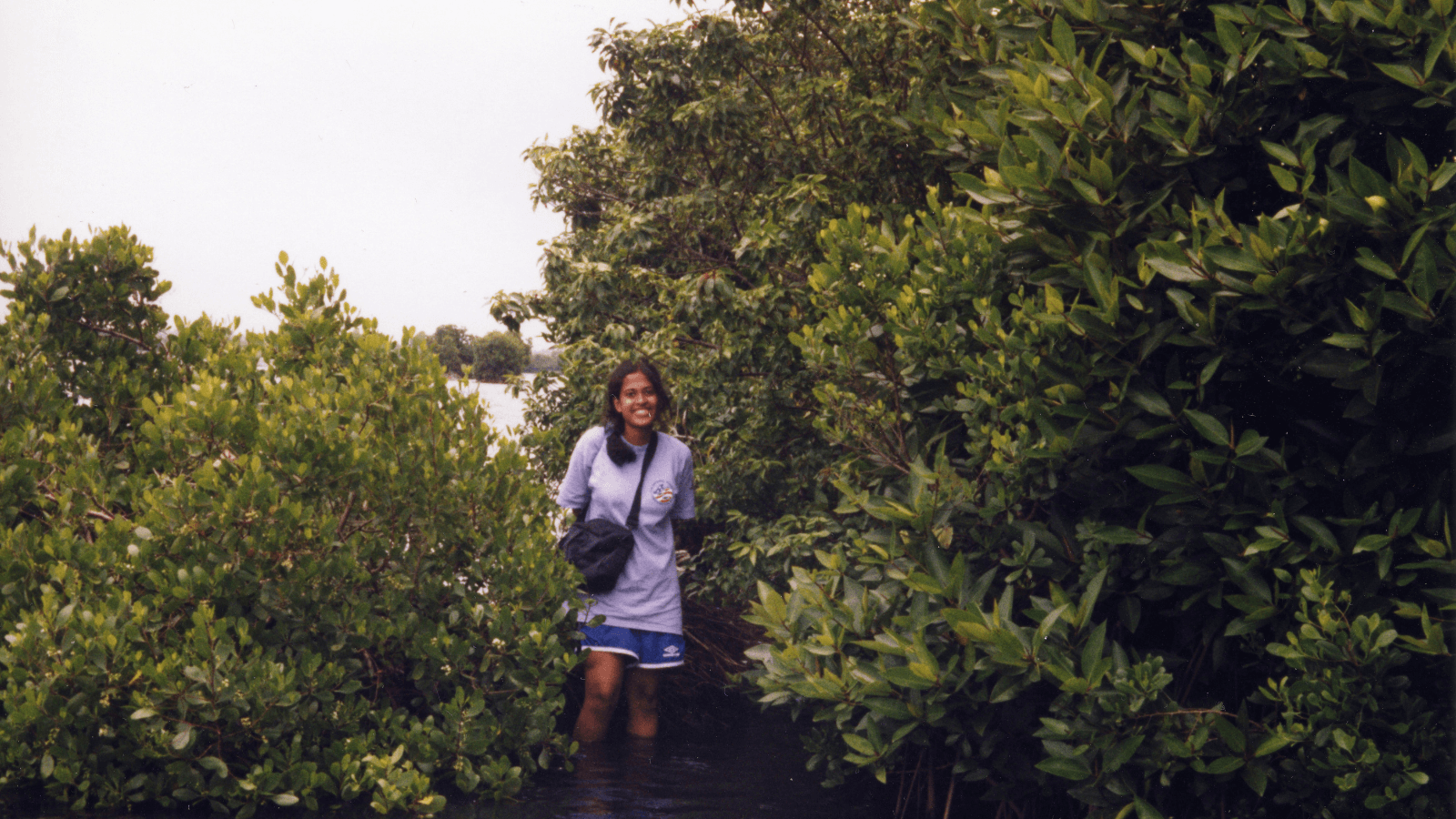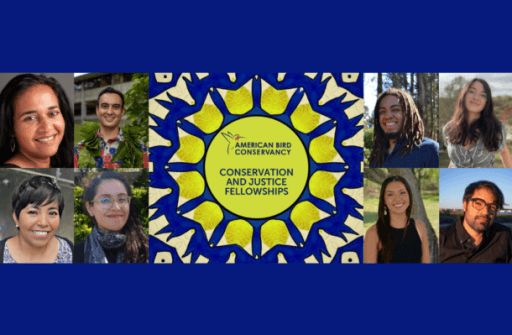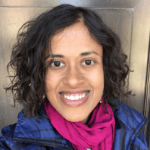Creating ABC's Conservation and Justice Fellowships

Over the next month, American Bird Conservancy (ABC) will publish a series of blog posts written by our 2022 Conservation and Justice Fellows on topics ranging from farmworker rights to the cultural importance of Hawaiian forest birds. The following is the origin story of ABC's fellowship program, written by ABC's Chief Diversity Officer Naamal De Silva.
Saving the Earth and Burning Out

In my earliest memories, I was an explorer, walking slowly around the land surrounding my home in Panadura, in Sri Lanka. As a quiet child, I found inspiration and comfort in observing all the life around me. Through memories, I can still roam a garden that has not existed for over 30 years, peering at the yellow-orange curve of flower petals, the feathery deep green of asparagus fern leaves, the turquoise flash of a kingfisher's wings — so much beauty, always within reach.
I moved to Washington, D.C. at the end of 1984, soon after turning six, and lived in a series of small apartments. I no longer had a garden and could not explore on my own. Nevertheless, I continued to find inspiration in the natural world. I watched nature documentaries on PBS and read about baby kangaroos and rainforests. From there, I moved on to learning about Snowy Owls and loggers, a cancer-causing hole in the ozone layer, and our rapidly growing human population. I learned that humans had done so much harm. By the time I was 12, I was crushed by the weight of this knowledge. I had to help fix things. Obviously, it was up to me to save the Earth.
Some version of this idea motivated me for the next two decades. In college, I spent hours watching crabs crawl across wire frames near Negombo, Sri Lanka; examined lichen growing on leaves at La Selva field station in Costa Rica; and peered through microscopes at chicken embryos in Pennsylvania. In the decade after that, I spoke with Kanak people in northeastern New Caledonia about sea level rise, fishing gear, reefs protected through ancient taboos, and creeks guarded by mythical sharks. I asked government officials in Tokyo about protecting Alliance for Zero Extinction sites within national parks, through community conservation, and within military bases. I learned from biologists in the Philippines about which frogs and birds and corals and bats are most threatened with extinction. I spent many weeks on planes and in conference rooms and many months with maps and spreadsheets. I got sick far too often, and worried endlessly that none of it was good enough.
There was so much to do and an ever-shrinking window in which to do it. Leatherback Sea Turtles, Giant Sequoias, Okinawan Rails, and thousands of other beautiful and awe-inspiring species face huge threats. Extinction is irreversible. Why didn't more people see what my colleagues and I saw? Why were there so few people working within conservation? Why did so few look like me or like the majority of students in D.C.'s public schools?
Seeking answers, I began a doctorate in education in 2011. It took me nearly a decade to learn how to think differently about these questions. Through many conversations and a lot of reading, I realized that the goal of “saving the world” was deeply problematic. It is too heavy a burden to bear, leading me and too many others working in conservation to overwork, anxiety, and burnout.

In our rush to save the planet, those of us who are researchers and practitioners may rely on solutions and strategies that do not adequately consider local context, history, and opportunities. As funders of conservation work, our desire to save the planet provides us with a sense of urgency that may prevent us from considering the longer time frames critical for multifaceted research, for building trust and partnerships, and for managing projects adaptively.
And finally, I learned that it was arrogant to think that any of us can “save” a planet, a bird, or another human. I realized that the best we can do is to save ourselves. We can allow birds and trees and waves and wild places to heal us while we act — in whatever ways we are able — to heal and serve specific species, places, and communities. When we position our conservation work as collective, it ceases to be a crushing weight. There is, after all, great joy to be found in working together toward a common purpose.
Many people with deeply rooted connections to specific places have always understood that relationships and interconnections and reciprocity are at the heart of sustainable stewardship. They recognize that we are caring for our beloved relatives, whether human, bird, or plant. If we pay close attention, listen deeply, and work collaboratively, we have a far better chance of preventing bird extinction and reversing anthropogenic climate change. I learned through my research and through consulting for a range of nonprofits that these collaborative and interconnected ways of knowing are increasingly influencing conservation. I had finally found a better way to help.
Serving the Earth and Saving Ourselves
I finished my doctorate in 2018, but kept learning. I began working with ABC at the end of 2019, using input from staff and partners to design a strategy to advance equity, diversity, and inclusion. During my time consulting for ABC, I realized two things. The first is that ABC staff are kind, hardworking, and dedicated to protecting birds. The second is that ABC already had a rich tradition of achieving results for birds through diverse partnerships across the Americas. Several partners with whom I spoke mentioned that ABC staff had treated them with respect and worked to complement their work rather than to compete with them for scarce funding.

Nevertheless, all conservation organizations work with scarce financial resources to address declines in species abundance and ecosystem health — declines exacerbated by climate change and our continued societal focus on consumption. Simply put, across organizations and geographies, we in conservation have too few staff, too few supporters, and too little money. These constraints place limits on the time we have to ask people about their aspirations and to understand intersections between threats facing birds and people. This, in turn, leads to solutions that may not be as sustainable and expansive as we need them to be, and to engaging fewer people in protecting birds.
In June of 2021, I began working full time for ABC as our Chief Diversity Officer. In the first year, I spent a lot of time listening. By the end of 2021, I had spoken individually with more than 60 staff and partners, and had participated in numerous broader conversations, all of which led me to believe that we needed new ideas and perspectives to influence and strengthen our bird conservation work. A fellowship program seemed like an ideal way forward.
It took a few months to work out the details. Should we fund a single person full time, investing in benefits and a fair salary? Or, should we spread our available funding out to invest in a larger number of individuals?
Fellowships are about investing in the future contributions of individuals just as much as they are about advancing research and strengthening an institution. Too many people in conservation are looking for work, are underemployed, or need additional experience and connections to find a better job. We decided to provide paid, part-time fellowships to address some of those needs. I also wanted to learn from others who had created and implemented fellowship programs, and did so through many informal conversations and through participating in a conservation fellowships group.
In early 2022, I reached out to members of our internal justice, equity, diversity, and inclusion group. I asked about specific gaps or opportunities related to their specific bird conservation programs and priorities. This yielded six potential project ideas, each with one or two ABC staff to serve as guides. A broader request to all staff yielded two additional projects. We launched the Conservation and Justice Fellowships and did some recruiting through environmental justice and education and storytelling spaces as well as from within conservation. I initially envisioned funding about three fellows in our inaugural year, but there were so many highly qualified candidates that we ended up with eight fellows.

Claudia, Noah, Katia, Javier, Harrison, Swapna, Barb, and Ellen began their work in the middle of 2022. Over the subsequent six months, they worked closely with project supervisors and partners and also met with me individually and as a group each month. Monthly workshops on Saturdays helped create a sense of community among individuals spread out from Hawai‘i to South Carolina. Their work was part time — approximately ten hours a week over six months. Because most fellows had other full-time work, consulting projects, or graduate research, most needed more than six months to complete their research and communicate their findings.
Over the remainder of 2023, you will hear directly from the fellows about their careers and backgrounds and about their research. ABC supervisors said that the fellows provided them with access to new networks and organizations or with opportunities for conversations that deepened their understanding of community engagement. They were able to more clearly illuminate specific connections between the well-being of birds and people. Fellows learned more about bird conservation, multi-institutional partnerships, and their research topics. Several fellows found new full-time positions. One decided to apply to graduate school and another found a new direction for research.
Over time, Conservation and Justice Fellows will help us at ABC to articulate what it looks like to collectively serve and heal the earth. Through their perspectives, we can consider what it means to use such service to help us heal ourselves. I hope their stories inspire you and enable you to reflect on how your own work, service, birding, and conversations can support healing.
Support Conservation and Justice Fellowships at American Bird Conservancy with a gift now »



















































